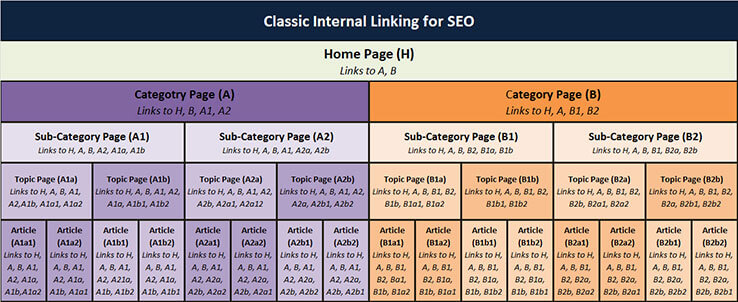
I rarely see a site with perfect on-site optimisation, and more often than not, I find highly established business websites with on-site Seo errors that are just shameful. Pointing new links to sites that have the following errors is going about things in the wrong order, and your links will provide diminishing returns because they’re being overshadowed by the following on-site Seo errors.
1. Not Having Your Primary Keyword in Your Meta Title Tag
This probably holds the most weight with regards to on-site Seo. I see countless sites trying to rank for their main keyword with unoptimised title tags holding back their rankings. Your meta title should contain your primary keyword in it, and where possible, it should use a well-structured sentence that leaves the browser curious and entices potential visitors to click on your search result. If your site is already ranking on the first page for your main keyword and you add your primary keyword into your title tag, then should easily move up a couple of more spots.
2. Over Optimised H1 Headings
If you’ve correctly included your primary keyword in your site’s meta title tag, and in your meta description, then you need to ensure that your H1 heading isn’t just repeating your primary keyword again. If your keyword is ‘Blue Widgets’, then you don’t want your H1 tag to be just ‘Blue Widgets’. Your H1 tag needs to be a little more creative to avoid being classified as keyword stuffing. If your site’s meta title and description are optimised correctly with your primary keyword, then you can afford to be fairly relaxed when it comes to your H1 heading.
Your H1 title should try to connect with your readers because the prominence of your keyword is far less critical in the H1 tag provided that your meta title and description contain your primary keyword. Seo prior to 2016 placed a lot of weight on H1 headings and sites were getting good results with H1 tags that only contained their keyword and nothing else. For our “Blue Widgets” keyword, a proper H1 heading might read something like this; ‘Affordable High-Quality Blue Widgets That Work’.
3. Not having an ‘Alt’ Tag with Your Main Keyword in it
If you want to make your web pages rank better, then ensure you have all types of media on the page. It means having ample written content, engaging images, and video. A common mistake is not to include your primary keyword inside one of your image alt tags. Preferably, add your keyword in your first image alt tag, so its high up on the page. There is a fast way to check this on your site. When you’re on your web page, press ‘CTRL+U’ to show your page source code. Then press ‘CTRL+F’ to open a search box. Then just type alt=”blue in the search box. It will highlight all instances of that search query within your page’s source code so you’ll easily be able to tell whether your page has its primary keyword within one of your images alt tags.
4. Not Siloing in Your Internal Links Properly
A simple explanation of this is to ensure that your website’s pages interlink wherever it makes sense to do this. Google likes to see contextual links to inner pages of your site. It’s not enough just to have a well-structured menu, you must include contextual links throughout your site linking to other internal pages about topics that are relevant to that page. If you go through your entire site and start interlinking (siloing) existing pages that touch on similar subjects you will see improvements in your rankings. There’s a bit more to Siloing correctly than just interlinking as proper Siloing creates a content hierarchy that helps to boost rankings. For a detailed explanation of Siloing content for Seo benefits, click here.
Be careful not to interlink using exact match keywords, as this will drive your keyword rich anchor text ratios up too high. If you’re creating a link from your ‘Blue Widgets’ page to your ‘Red Widgets’ page, then don’t use the anchor text ‘Red Widgets’. Use partial match or generic anchor text links and save your exact match anchor text links for your best inbound links.
5. Not Having Semantically Associated Keywords
I see a lot of well-written content, but it’s quite rare that I see content that is seeded correctly with semantically associated keywords. Ironically, here’s a perfect example of Siloing that I covered in the above point: click here to learn more about how to ensure your content has the correct semantically associated keywords. That’s a perfect example of an internal silo link with generic anchor text.
When writing about your primary keyword, it’s easy to leave out other important naturally associated keywords. Traditional Seo has always placed great emphasis on keyword density however in 2017 much more focus is being placed on having the correct density of semantically associated keywords. It makes perfect sense because good content would naturally have these associated keywords within it, and spammy content always tends to place too much focus on the primary keyword.
In 2016, your keyword density can be as low as 1%, and your page will still perform exceptionally well in the search results. Provided that your content contains the correct density of semantically associated keywords that Google deems to be important, a 1% primary keyword density is enough.
The good thing about on-site Seo is that it only has to be done properly once. Once you have your entire website up and running, and it’s fully optimised, you can focus your energies on offsite marketing tactics such as link building. But if your site contains multiple on-site Seo errors such as the ones listed above, then a lot of your link building efforts will be in vain.
Bonus tip:
Do some research to ensure you’re on the absolute fastest host possible for your geographical area. If you’re not sure where your site is hosted, then do a reverse ‘hosting who is‘ look up to find out. Always make sure you put your site on the fastest hosting possible!
The speed of your site affects the way visitors interact with it. When your site is faster the user metrics like bounce rate and ‘time on site’ always tend to improve. Trying to rank your website while it is failing speed tests on GTmetrix or Google’s Page Speed tests is ludicrous. Ensure your site successfully passes these speed tests before you even consider doing any offsite Seo.

